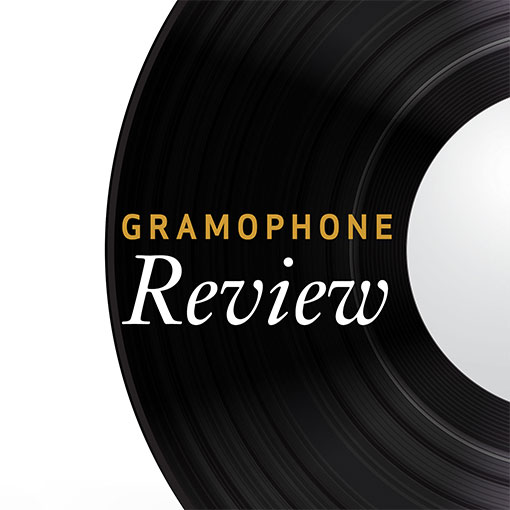Haydn Symphonies
View record and artist detailsRecord and Artist Details
Composer or Director: Joseph Haydn
Label: Deutsche Harmonia Mundi
Magazine Review Date: 10/1994
Media Format: CD or Download
Media Runtime: 78
Mastering:
DDD
Catalogue Number: 05472 77294-2

Tracks:
| Composition | Artist Credit |
|---|---|
| Symphony No. 96, 'Miracle' |
Joseph Haydn, Composer
(La) Petite Bande Joseph Haydn, Composer Sigiswald Kuijken, Conductor |
| Symphony No. 97 |
Joseph Haydn, Composer
(La) Petite Bande Joseph Haydn, Composer Sigiswald Kuijken, Conductor |
| Symphony No. 98 |
Joseph Haydn, Composer
(La) Petite Bande Joseph Haydn, Composer Sigiswald Kuijken, Conductor |
Author: Richard Wigmore
By offering a third symphony, this new recording scores an immediate advantage over the Bruggen disc I reviewed last month. And Kuijken's readings of all three works are predictably stylish and sympathetic. His expert period orchestra, based on a string section of 7.6.4.3.3 and including a discreetly balanced harpsichord continuo, is rather smaller than Bruggen's, smaller, too, than the band Haydn directed in London's Hanover Square Rooms. Occasionally, especially in the aggressive No. 97 and in the first movement of No. 98, I found myself wishing for a fuller body of violins. But in the main the tuttis are amply sonorous, with rather more impact from brass and timpani than on Kuijken's recording of Nos. 93-95 (10/93)—though the antiphonal horn and trumpet fanfares near the end of No. 96's opening Allegro (6'08'') don't quite thrill as they should do.
Kuijken is at his most persuasive in the slow movements and the minuets. The 6/8 Andante of No. 96 has a chamber-musical finesse and delicacy (exquisitely turned violin solos in the cadenza, from 4'41''), while the Adagio of No. 98 unfolds with greater breadth and repose than in Bruggen's edgier reading—though Kuijken is fully alive to the tragic implications of the development. In all three minuets tempo and character are shrewdly calculated; and it hardly matters that No. 98's lusty earthiness produces the odd moment of rhythmic instability.
The theatrical timpani solo in the minuet of No. 97 (0'43'') is altogether more arresting than from Bruggen. In the outer movements Kuijken is invariably lucid and elegant, but sometimes a shade too relaxed for my taste. In the opening Allegro of No. 98, for instance, Bruggen, at a more urgent tempo, generates a stronger sense of symphonic growth and drama; and in No. 97 he eclipses Kuijken in grandeur and brazen power, with tauter rhythms and sharper accents—though both conductors slacken the pulse unnecessarily in the long first movement coda. Against this, Kuijken nicely judges the pace and spirit of No. 98's Moderato send-off, where a surprising number of conductors come to grief, including Bruggen, who indulges in some crazy tempo fluctuations. If elsewhere Bruggen's readings of Nos. 97 and 98 are that much bolder and more purposefully controlled, Kuijken's smoother, more genial performances, finely executed and recorded, should appeal to many Haydn collectors, who may in any case be swayed by the inclusion of No. 96.'
Kuijken is at his most persuasive in the slow movements and the minuets. The 6/8 Andante of No. 96 has a chamber-musical finesse and delicacy (exquisitely turned violin solos in the cadenza, from 4'41''), while the Adagio of No. 98 unfolds with greater breadth and repose than in Bruggen's edgier reading—though Kuijken is fully alive to the tragic implications of the development. In all three minuets tempo and character are shrewdly calculated; and it hardly matters that No. 98's lusty earthiness produces the odd moment of rhythmic instability.
The theatrical timpani solo in the minuet of No. 97 (0'43'') is altogether more arresting than from Bruggen. In the outer movements Kuijken is invariably lucid and elegant, but sometimes a shade too relaxed for my taste. In the opening Allegro of No. 98, for instance, Bruggen, at a more urgent tempo, generates a stronger sense of symphonic growth and drama; and in No. 97 he eclipses Kuijken in grandeur and brazen power, with tauter rhythms and sharper accents—though both conductors slacken the pulse unnecessarily in the long first movement coda. Against this, Kuijken nicely judges the pace and spirit of No. 98's Moderato send-off, where a surprising number of conductors come to grief, including Bruggen, who indulges in some crazy tempo fluctuations. If elsewhere Bruggen's readings of Nos. 97 and 98 are that much bolder and more purposefully controlled, Kuijken's smoother, more genial performances, finely executed and recorded, should appeal to many Haydn collectors, who may in any case be swayed by the inclusion of No. 96.'
Discover the world's largest classical music catalogue with Presto Music.

Gramophone Digital Club
- Digital Edition
- Digital Archive
- Reviews Database
- Full website access
From £8.75 / month
Subscribe
Gramophone Full Club
- Print Edition
- Digital Edition
- Digital Archive
- Reviews Database
- Full website access
From £11.00 / month
Subscribe
If you are a library, university or other organisation that would be interested in an institutional subscription to Gramophone please click here for further information.





